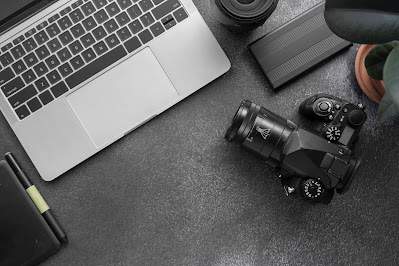Yvette Heiser Photography Basics with Essential Photo Editing Techniques for Pro-Quality Photos
With the advancements of the digital era, creating breathtaking photographs is now easier and more achievable than ever before. Whether you're an aspiring photographer or simply want to enhance your social media presence, mastering photography basics and essential photo editing techniques can transform ordinary snapshots into professional-quality images. Yvette Heiser Photography serves as an inspiring example of how thoughtful shooting and editing can captivate viewers and tell compelling visual stories.
Mastering Photography Fundamentals
Understanding Camera Settings
The foundation of great photography begins with understanding your camera's core settings. The exposure triangle—aperture, shutter speed, and ISO—forms the backbone of every successful photograph.
Aperture controls depth of field and light intake. Use wider apertures (f/1.4-f/2.8) for portraits with blurred backgrounds, and narrower apertures (f/8-f/11) for landscapes requiring sharp focus throughout the frame.
Shutter speed determines motion capture. Fast speeds (1/500s or higher) freeze action, while slower speeds create artistic motion blur. For handheld shots, maintain shutter speeds faster than your focal length to avoid camera shake.
ISO affects image sensitivity and noise levels. Keep ISO as low as possible (100-400) in good lighting conditions, and increase only when necessary to maintain proper exposure.
Composition Techniques That Work
Strong composition separates amateur photos from professional results. The rule of thirds places subjects along imaginary grid lines, creating more dynamic and visually appealing images. Leading lines guide viewers' eyes toward your main subject, while framing uses natural elements like branches or doorways to create depth and focus.
Pay attention to lighting conditions throughout the day. Golden hour (sunrise and sunset) provides warm, soft light that flatters subjects naturally. Avoid harsh midday sun that creates unflattering shadows, or use it creatively with proper positioning and fill flash techniques.
Essential Photo Editing Workflow
Basic Adjustments for Maximum Impact
Post-processing transforms good photos into exceptional ones. Start with basic adjustments that have the most significant visual impact on your images.
Exposure and highlights correction ensures proper brightness without losing detail in bright areas. Slightly underexpose during shooting to preserve highlight information, then adjust in post-processing.
Shadow and contrast adjustments reveal hidden details in darker areas while maintaining overall image depth. Lifting shadows moderately can rescue seemingly unusable photos.
Vibrance and saturation enhance colors naturally. Vibrance selectively boosts muted colors while protecting skin tones, making it ideal for portraits and landscapes.
Advanced Editing Techniques
Color grading establishes mood and style consistency across your portfolio. Warm tones create inviting, cozy atmospheres, while cool tones suggest professionalism or melancholy. Subtle adjustments in highlights and shadows using different color temperatures add sophisticated depth to your images.
Selective editing allows targeted improvements to specific image areas. Use masking tools to brighten subjects' faces, enhance sky drama, or adjust individual color ranges without affecting the entire photograph.
Sharpening and noise reduction optimize image quality for different output formats. Apply appropriate sharpening based on viewing medium—web images require different treatment than large prints.
Creating Your Signature Style
Developing a consistent editing style helps build recognition and professional credibility. Study photographers whose work resonates with you, analyze their techniques, and gradually develop your unique approach through experimentation and practice. Yvette Heiser Painting with Pixels A Guide to Advanced Photo Editing Techniques is an excellent resource for understanding how to refine your post-processing skills while maintaining artistic integrity.
Remember that editing should enhance, not replace, strong photography fundamentals. Master camera techniques first, then use post-processing to polish and perfect your creative vision. By combining solid photography basics with thoughtful editing techniques, you’ll consistently produce professional-quality images that shine in today’s visually competitive landscape.




Comments
Post a Comment